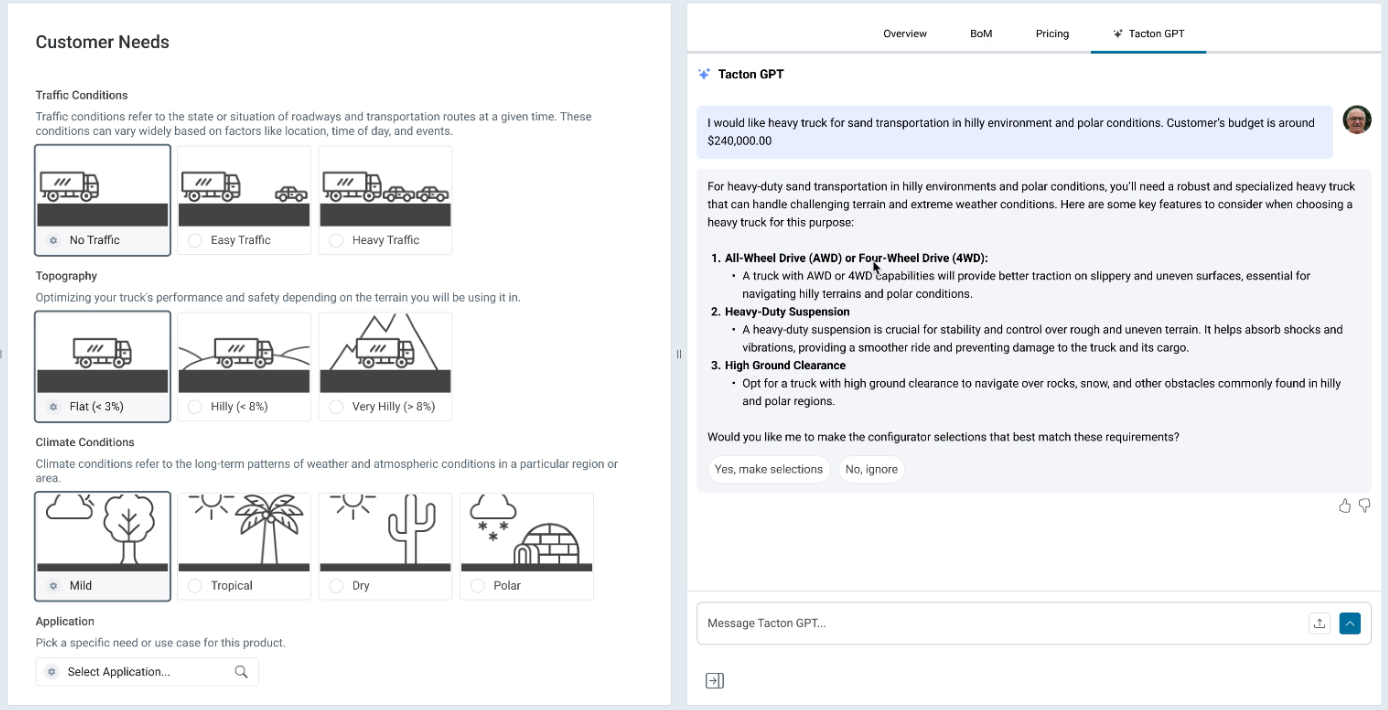Unlocking Sales Intelligence: How Manufacturers Can Simplify Data and Compete Smarter
Quoting has long been treated as a back-office process to streamline for speed and accuracy. But when quoting and configuration live in a digital platform, they create a foundation for sales intelligence that reveals how customers buy, how markets shift, and where there’s growth potential.

Quoting has long been treated as a back-office process to streamline for speed and accuracy. But when quoting and configuration live in a digital platform, they create a foundation for sales intelligence that reveals how customers buy, how markets shift, and where there’s growth potential.
According to the Tacton 2025 State of Manufacturing Report, based on insights from global manufacturers, this opportunity is largely underutilized. Forty-three percent of manufacturers still rely on manual configure, price, quote (CPQ) processes, mostly spreadsheets. At the same time, nearly half of spreadsheet users say they are “satisfied” with their processes, suggesting that many organizations underestimate the strategic value of digitizing sales data, especially within CPQ.
Data maturity in manufacturing sales: Sales intelligence vs. sales reporting
A majority of manufacturers today are still in manual reporting mode, with 55% reporting manually and only 37% using analytics embedded in their CRM, CPQ, or specific system. They track traditional CPQ metrics, such as quote turnaround times, error rates, discount frequency, that measure efficiency but stop short of strategy.
Sales intelligence represents the next stage of data maturity. It leverages the data generated by every configuration and quote as a living dataset where sales teams work to:
- Uncover customer preferences and price sensitivity across regions and segments.
- Reveal demand shifts that indicate where markets are growing or contracting.
- Show which deals and configurations deliver sustainable margins versus which erode profitability.
The key difference isn’t in producing more dashboards. It’s in simplifying data reporting and intelligence, so sales and quoting data are embedded in systems.
Quoting data becomes a shared intelligence base when it’s captured consistently in the same source of truth. Sales, finance, and product teams no longer rely on anecdotal knowledge or siloed reports.
The risks of poor data maturity and disconnected sales intelligence
The risks of not using CPQ as a sales intelligence tool compound over time.
First, knowledge gets locked away. With 30% of manufacturers expecting significant retirement in their sales and engineering workforce within the next five years, failing to digitize quoting and configuration data risks losing critical context about how products are sold. A centralized, digitized system, such as a CPQ platform, ensures that expertise isn’t confined to a few individuals. It becomes accessible to every relevant stakeholder.
Second, errors are normalized and signal weak data maturity. Even with rapid quoting cycles, errors persist. In fact, 58% of manufacturers that have streamlined their quoting still report frequent quote quality issues. If a company can’t trust its quotes, it can’t trust the underlying data. Analytics built on bad or inconsistent data will mislead decision-making, and quoting speed without intelligence creates noise and takes away the opportunity to learn from sales and product performance.
Finally, strategic blind spots persist when data is layered in too many systems. Without consistent reporting embedded in the platform where sales works, such as CPQ, manufacturers miss signals about customer behavior and competitive dynamics. Deals are treated as isolated events rather than as data points that, when connected, could shape smarter account strategies or reveal emerging trends.
Three key requirements for building a sales intelligence foundation
To evolve from transactional quoting to strategic sales intelligence, manufacturers must first simplify their data landscape.
- Consistency over complexity: The key to maturity is capturing data reliably in one place, not adding more tools. Integrating and embedding data into a central platform ensures inputs are standardized and usable.
- Cross-functional accessibility: Intelligence grows when shared. Sales, finance, and product leaders need aligned visibility into how quoting patterns affect margins, growth, and competitiveness.
- Learning loops: Every quote is a learning opportunity. Over time, trends in pricing, product mix, and deal outcomes can guide strategy—if those patterns are captured and fed back into the system.
Develop a data-driven sales engine with Tacton
The State of Manufacturing Report shows that while quoting remains a weak link, a major opportunity lies in advancing data maturity. By treating CPQ as a sales intelligence system rather than a transactional tool, manufacturers can unify data, simplify layers of technology and data, and gain the insights needed to compete strategically.
Learn how to build a data-driven sales engine with Tacton, the leading CPQ buyer engagement platform for manufacturers. See how CPQ can become a central layer for your smart factory to help you improve quoting, product profitability, lead times, and so much more.



